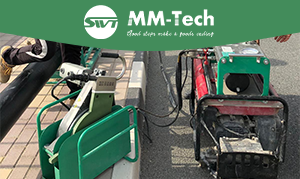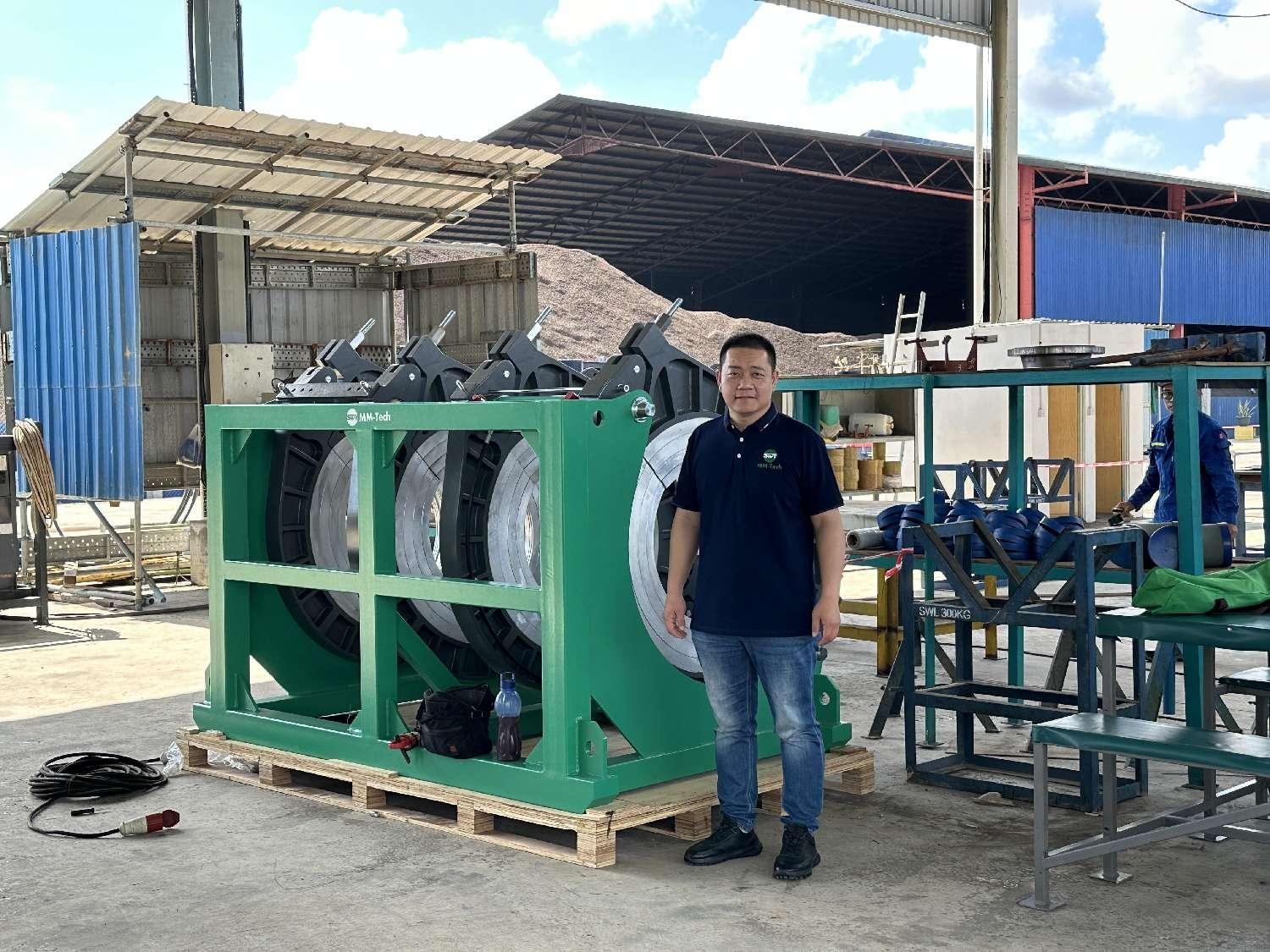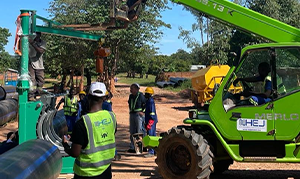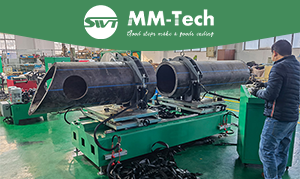Selecting the right HDPE pipe fusion welding machine can determine your project’s success. Challenges like improper alignment, contaminated surfaces, or operator errors often compromise weld quality. Environmental factors, such as temperature or humidity, also affect results. A reliable machine ensures precision, durability, and efficiency, making it essential to evaluate every hdpe pipe fusion welding machine for sale carefully.
Identify Your Project Requirements
Understanding your project requirements is the first step in selecting the right HDPE pipe fusion welding machine. Each project has unique demands, and aligning the machine’s capabilities with these needs ensures efficiency and quality.
Pipe Size and Material Compatibility
The size of the pipes and their material play a critical role in determining the machine you need. For instance, butt fusion machines are ideal for large-diameter pipes, especially those exceeding 24 inches. Electrofusion machines, on the other hand, are better suited for smaller pipes where precision is essential. You should also consider the type of material, such as PE, PP, or PVDF, to ensure compatibility with the welding process. Matching the machine to the pipe size and material compatibility avoids operational inefficiencies and ensures strong, durable joints.
Scale and Scope of the Project
The scale and scope of your project influence the type of machine and features required. For large-scale projects, machines with higher capacity and automation levels are often necessary to handle the workload efficiently. Smaller projects may benefit from simpler, more cost-effective equipment. You should also assess resource allocation and prioritize high-stakes decisions to maximize outcomes. By aligning the machine’s capabilities with your project’s scale, you can optimize performance and reduce risks.
Environmental and Operational Conditions
Environmental factors significantly impact the performance of HDPE pipe fusion welding machines. Extreme cold or windy conditions can disrupt heat distribution, leading to poor joint integrity. In colder temperatures, longer heating times may be required to achieve proper fusion. You should evaluate the operational environment and choose a machine designed to withstand these challenges. This ensures consistent performance and high-quality welds, even in demanding conditions.
By carefully analyzing these factors to consider when selecting HDPE welding equipment, you can make an informed decision that aligns with your project requirements.
Types of Fusion Welding Machines
Choosing the right fusion welding machine depends on understanding the available options and their applications. Each type of machine offers unique advantages tailored to specific project needs. Below, you’ll find an overview of the most common types of fusion welding machines.
Butt Fusion Machines by MM-Tech
Butt fusion machines are among the most versatile options for joining HDPE pipes. These machines align and secure the pipe ends, applying heat and pressure to create a seamless joint. MM-Tech’s butt fusion machines stand out as high-performance machines, offering precise temperature and pressure control. They are ideal for large-diameter pipes and projects requiring durable, long-lasting connections. The MM-TECH V Series, for example, includes advanced features like a data logger for monitoring the fusion welding process, ensuring compliance with industry standards.
Electrofusion Machines
Electrofusion machines are perfect for projects requiring precision in tight spaces or repairs. These machines use specialized fittings with embedded electrical coils to melt and fuse pipe ends. They excel in joining pipes of varying diameters and materials. While they offer strong joints and flexibility, they require strict quality control and specialized training. The table below highlights their advantages and disadvantages:
Advantages | Disadvantages |
|---|---|
Precision in welding | High costs of fittings |
Strong joints in difficult-to-access areas | Need for strict quality control |
Suitable for joining different materials and diameters | Requirement for specialized training and equipment |
Socket Fusion Machines
Socket fusion machines are best suited for smaller-diameter pipes. This method involves heating the spigot end of one pipe and the socket end of a fitting before joining them. It ensures high leak tightness and is particularly effective for projects requiring flexibility. These machines are compact and easy to operate, making them a popular choice for smaller-scale applications.
Specialized Machines for Unique Applications
Certain projects demand specialized fusion welding machines. For example:
Flange Welding Machines: Essential for connecting HDPE pipes to metal flanges in industrial settings.
Extrusion Welding Machines: Ideal for repairing and fabricating large-diameter pipes and tanks.
Electrofusion Machines: Compact and designed for precise welds in confined spaces.
These machines cater to unique requirements, ensuring the fusion welding process meets the highest standards of quality and reliability.
Understanding the types of fusion welding machines helps you select the best HDPE pipe welding machine for your project. Whether you need precision, durability, or flexibility, there’s a machine designed to meet your needs.
Key Features of the Best HDPE Pipe Welding Machine
Temperature Control and Accuracy
Precise temperature control is critical for achieving strong and durable welds. You must ensure the machine maintains a consistent preheat temperature, ideally between 400°F and 450°F, to facilitate proper fusion. Uniform heating minimizes temperature differentials, which can weaken joints. Machines with automatic temperature control systems are highly recommended as they ensure even heat distribution and prevent overheating or underheating. Regular calibration of the heating plates further enhances accuracy, helping you avoid issues like cold welds or compromised joint integrity.
Pressure Control and Monitoring
Maintaining consistent pressure during the welding process is essential for creating leak-proof joints. A reliable machine allows you to monitor and adjust pressure levels accurately. If pressure is released prematurely, it can lead to misaligned joints or weak bonds, reducing the joint’s ability to handle operational stress. Machines equipped with a large, readable pressure gauge simplify this process, ensuring you achieve strong and stable connections every time.
Automation and Ease of Use
Automation significantly improves the ease of use and automation of HDPE pipe welding machines. Advanced models feature automated control systems and real-time monitoring, streamlining the welding process. These systems enhance efficiency and reduce the likelihood of operator error. Intuitive controls also make the machines user-friendly, requiring minimal training. By choosing a machine with these features, you can ensure reliable and consistent results, even for complex projects.
Durability and Build Quality
Understanding HDPE fusion machines involves evaluating their durability and build quality. Machines constructed with high-quality materials and reinforced joints offer long-lasting performance. A heavy-duty frame provides stability, especially when handling multiple pipes. Features like anti-stick Teflon-coated heating plates and robust trimmer tools further enhance the machine’s reliability. Investing in a durable machine reduces maintenance costs and ensures it withstands the demands of various welding applications.
Budget and Cost Considerations for an HDPE Pipe Fusion Welding Machine for Sale
Initial Cost vs. Long-Term Value
When evaluating the cost of an HDPE pipe fusion welding machine for sale, you should consider both the initial investment and the long-term value. While high-quality machines may seem expensive upfront, they offer significant advantages. Features like advanced automation and precise controls enhance efficiency, reducing errors and saving time. Over time, these benefits translate into lower operational costs and increased productivity.
HDPE pipes, known for their durability, have a lifespan of 50 to 100 years, far exceeding that of galvanized steel pipes. For example, a project in India demonstrated that an HDPE pipeline cost $129,382, compared to $299,000 for a mild steel pipeline. This highlights the cost-efficiency of investing in durable materials and reliable equipment. By choosing a high-performance plastic pipe welder, you can achieve substantial savings over the machine’s lifespan.
Renting vs. Buying
Deciding whether to rent or buy a plastic pipe welder depends on your project’s scope and frequency of use. Renting offers a cost-effective solution for short-term or one-time projects, eliminating the need for a large upfront investment. However, purchasing a machine becomes more economical for long-term or recurring projects. Ownership allows you to customize the equipment to your needs and ensures availability whenever required. Evaluate your project pipeline to determine the most practical option.
Maintenance and Operating Costs
Proper maintenance is essential to maximize the lifespan and performance of your HDPE pipe welding machine. Establishing a preventative maintenance program minimizes downtime and reduces repair costs. Regular cleaning and adherence to maintenance schedules based on usage ensure the machine remains in optimal condition. Keep spare parts on hand for quick replacements and store the equipment in suitable conditions to prevent damage. These practices not only lower the total cost of ownership but also enhance the reliability of your plastic pipe welder.
By carefully considering these factors, you can make an informed decision that balances cost-efficiency with performance, ensuring your investment delivers long-term value.
Tips for Ensuring Quality and Efficiency
Follow Manufacturer Guidelines
Adhering to manufacturer guidelines ensures optimal performance and safety when using HDPE pipe welding machines. These guidelines provide precise instructions for machine settings, such as maintaining the correct fusion pressure between 90 and 150 psi. This prevents weak joints and ensures strong, durable connections. Always refer to the manual for specific safety features and operational protocols.
Operating an HDPE pipe welding machine with precision and care is paramount to achieving robust, leak-free connections. Always follow the manufacturer’s recommendations to avoid errors and maximize efficiency.
Preventative maintenance, as outlined in the guidelines, is equally important. Incorporate maintenance schedules into your project planning to avoid unexpected downtime. Reliable welding machines, like those from MM-Tech, come with detailed manuals to help you achieve consistent results.
Regular Maintenance and Calibration
Establishing a preventative maintenance program is crucial for reducing costs and minimizing downtime. Clean your equipment regularly and inspect heating plates for even temperature distribution, maintaining a range of 220-260°C. Set maintenance intervals based on time or machine usage to ensure consistent performance. Record all repairs and services to track the machine’s condition over time.
Calibration is another critical step. Regularly calibrate your machine to maintain accurate temperature and pressure settings. This prevents issues like misaligned joints or uneven heating, which can compromise weld quality. Reliable welding machines often include built-in calibration tools, simplifying this process.
Proper Training and Usage
Proper training equips operators with the skills needed to use HDPE pipe welding machines effectively. Comprehensive programs, such as those offered by institutions like McElroy University, focus on equipment operation, troubleshooting, and adherence to safety standards. Trained operators can identify potential issues early, ensuring smooth project execution.
You should also emphasize the importance of understanding the machine’s safety features. These features protect operators and enhance the overall efficiency of the welding process. By investing in training, you not only improve weld quality but also reduce the risk of accidents and equipment damage.
Choosing the right HDPE pipe fusion welding machine involves aligning the equipment with your project’s unique requirements. Follow these steps to ensure success:
Evaluate your project needs, including pipe size, application, and budget.
Prioritize machines with user-friendly features like automatic temperature control.
Select durable machines that ensure consistent fusion quality and safety.
Misaligned pipes can compromise weld integrity. Adjust the installation direction and stabilize the pipes using clamping bolts to achieve perfect alignment.
Understanding machine types ensures efficiency. For example:
Butt fusion machines handle large-diameter pipes.
Electrofusion machines excel in tight spaces.
MM-Tech’s Butt Fusion Machine offers unmatched reliability. Its lightweight aluminum build, compatibility with various materials, and 2-year warranty make it a valuable investment.
Balancing cost considerations also enhances project success.
Cost Factor | Impact |
|---|---|
Long-term savings justify higher upfront expenses. | |
Lightweight HDPE pipes reduce labor costs | Faster installation minimizes disruptions and accelerates ROI. |
By making informed decisions, you can ensure your project achieves durable, efficient, and cost-effective results. MM-Tech remains committed to delivering high-quality solutions tailored to your needs.
FAQ
1. What is the lifespan of an HDPE pipe fusion welding machine?
The lifespan depends on maintenance and usage. With proper care, high-quality machines like MM-Tech’s can last over 10 years, ensuring reliable performance for multiple projects.
2. Can you use one machine for different pipe materials?
Yes, many machines, including MM-Tech’s Butt Fusion Machine, support multiple materials like PE, PP, and PVDF. Always check compatibility before starting your project.
3. How do you ensure proper alignment during welding?
Use clamping bolts or alignment tools provided with the machine. Proper alignment prevents weak joints and ensures a strong, durable connection between pipes.
Tip: Regularly inspect your machine’s alignment tools to maintain precision and avoid costly errors during welding.











